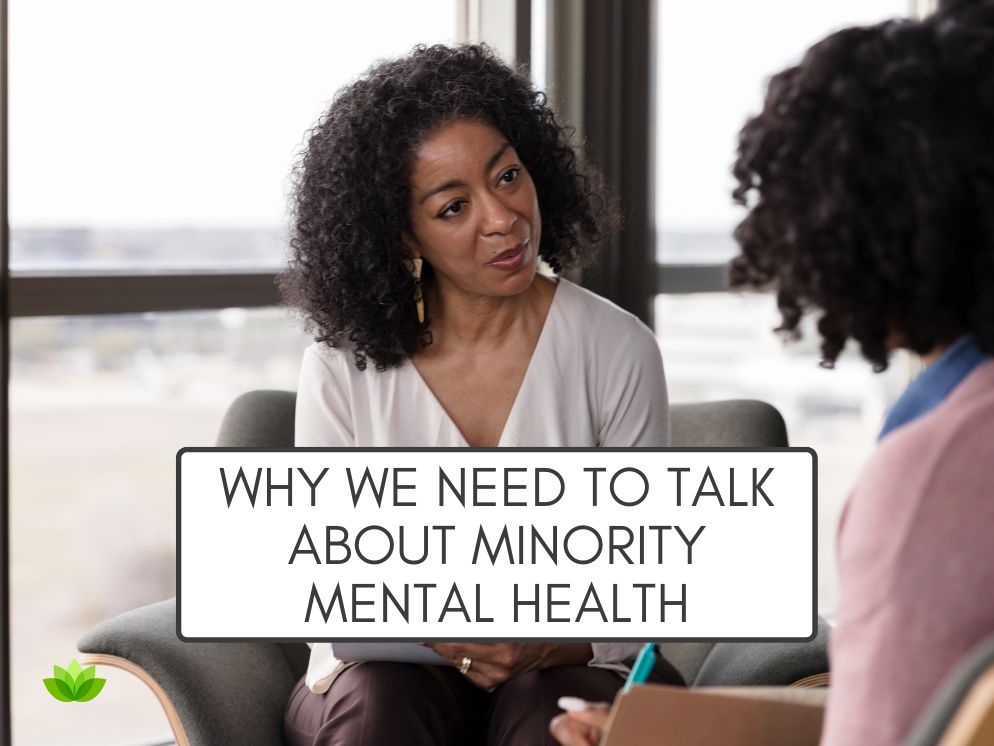- Unpacking Grief and Disability - July 8, 2024
- Breaking the Stigma: 5 Blogs to Better Understand Suicide - May 21, 2024
- 4 Tips for Better Sleep Hygiene - March 4, 2024
What is Bipolar Disorder?
You may have heard of Bipolar Disorder referred to as “manic depression.” This, combined with the fact that bipolar disorder often includes depressive episodes, is the main reason for the confusion between the two disorders.
While things do overlap between the depressive episodes of bipolar disorders and depression, the two are distinct & different conditions. But bipolar disorder doesn’t just have depressive episodes–it’s categorized by both extreme highs and extreme lows.
This doesn’t necessarily mean extreme happiness or extreme sadness. In fact, the “manic” episodes within bipolar disorder often aren’t expressions of extreme happiness, but episodes of restless high energy, heightened emotions, and grandiose beliefs. 
There is a wonderful video of Carrie Fisher explaining her bipolar disorder to a young boy at Comic Con where she describes it as, “a kind of virus of the brain. It makes you go very fast, or very sad. Or both–those are fun days. So judgment isn’t one of my big good things. But I have a good voice, I can write well. I’m not a good bicycle rider. I’m just like everybody else only louder, and faster, and sleeps more.”
The signs of Bipolar Disorder include things like:
- Restless energy
- High sex drive
- Feeling as though you don’t need very much sleep
- Inflated self-esteem
- Distractibility
- Impulsive judgment & decision making
- Increased risk taking
- Racing thoughts, more talkative than usual
What is Depression?
Depression, on the other hand, is a mood disorder without the “ups” that bipolar disorder has. Just as the “ups” in bipolar disorder aren’t exclusively expressions of happiness, the “downs” one feels in a depressive episode isn’t always as simple as sadness. Rather, when one feels depressed, it can be a complete lack of emotion. Some have described it as the emotional equivalent to watching paint dry. You aren’t sad or mournful, you are just depleted.
Read: What to Do If You Have Depression
Because of this, those experiencing depression often feel a disconnect from their everyday lives. Rather than feeling the full range of emotions that come and go for many people, they instead feel as though they are going through the motions without really connecting. There is a severe lack of energy, extreme fatigue, loss of appetite, disrupted sleep (or too much sleep), etc.
In Houston, support groups for depression and anxiety can be an excellent resource for finding additional help and resources. Members can share information about therapists, treatment options, and other mental health resources that they have found helpful. This exchange of information can be particularly useful for those who may be struggling to find the right treatment or support for their depression.
The signs of Depression include things like:
- Sadness, hopelessness, or feeling empty
- Lack of interest in things or activities you typically enjoy
- Extreme changes in appetite (eating much more or much less than usual)
- Extreme changes in sleep (sleeping much more or much less than usual)
- Inability to concentrate
- Headaches or other body aches
- Feelings of excessive guilt
- Thoughts of death or suicide
What to Do:

While both different disorders, if untreated both Bipolar Disorder and Depression can greatly impact and impair social, professional and everyday functioning.
Bipolar disorder presents it’s own unique obstacles for diagnosis, as it is hard to recognize episodes of mania within yourself. Sometimes it may just feel like you are “bouncing back” from a depressive episode if you don’t monitor your symptoms and behaviors closely. Because of this, getting an accurate diagnosis for Bipolar DIsorder can take some time.
In order to properly diagnose and treat both depression and bipolar disorder, it’s important to pay attention to your own symptoms and behavior. Keep a log of your moods. Track how you feel physically, mentally and emotionally to see if there are any patterns. And bring them to a professional who can help talk you through what you may be experiencing.
Once you have talked to a professional and figured out a course of medical treatment (which can include medication, talk therapy or a combination of the two), things you can do on your own include:
- Tracking your symptoms, things that trigger you, and creating an action plan for how to cope when you find yourself entering either a manic or depressive episodes
- Make a list of people that exist within your support system and brainstorm things to say to them to reach out when you feel yourself begin to self isolate
- Introduce movement and exercise into your routine–even small things like taking a walk around the block can make a big difference in managing our moods
- Be sure to add nutrient dense foods to things you eat daily
- Avoid alcohol–it can have major effects on your mood and can be dangerous to consume with any mood stabilizers your doctor may prescribe
Talking to a professional is the first important step in seeking help. If you recognize signs & symptoms of depression or bipolar disorder in yourself, one of our therapists can help. Contact us today!






My mother was diagnosed as a manic depressive (or Bi polar) and she certainly didn’t display a lot of the symptoms that you talk about. She had highs and lows and was a very difficult person to live with, One day she was happy and another day she was down. I would come home from school and she would have packed a few items to move with. As such I never had anything much and it was very difficult to make friends esp when a teenager. She eventually met a man who was good for her (when I was about 14 years old), but if the tension in her life became too much, she would just up and leave him. Many a time I would be torn from my life, the few friends that I had, and more sadly my dog (sometimes I never saw the dog/s in my life again). She didn’t display most of the signs that you have listed above. When on a high, She would display a level of confidence, racing thoughts, emptying ashtrays if one put even a hint of ash into them, washing clothes at night and hanging them out at 3 am, cleaning constantly and so on. When on a low, she would become withdrawn, quite vitriolic, she would become abusive (such as cleaning my sister’s and my ears until they hurt or she would cut our nails down to the quick, which was very painful), she would keep the curtains pulled shutfor days, she would distance herself from us kids and our step father. Maybe I am misreading what you are saying and I do apologize if such be the case. For myself (and I think that I can speak on behalf of my sister), life was very, very, very tough and it made growing up as a healthy and mature adult almost impossible but we both (my sister and me), we got through it. It was difficult for years, even into adulthood and even now can rear its ugly head.
We both sincerely loved our mum right up until the time of her death in September 2021 and we both have found our individual ways of forgiving her as she was not a bad person,by anymeans, but a mother who was sick, and we fully recognize and appreciate this. It all started when I was 5 and she had a series of breakdowns and was institutionalized 7 times over a 6 year period. I remember that when I was 10 years old, I was taken to visit her in a psychiatric hospital and she didn’t even recognize me (or my brothers who were brought up with my father); this is something that crushed me at the time and caused me a lot of problems esp.as a teenager and young adult. We expect our parents to recognize us and to then not do so, how crushing. For me personally, it was more difficult as my father sexually abused me at the time of her hospitalization and I remember just wanting her to be around to protect me. Even now, at 60 years old, I cannot remember anything of my life between 5 to 9 years old and a therapist said that it is best that we not explore this any further.
We must try to understand such illnesses and find ways of supporting the person themselves, their family,and especially any children that may be impacted. We talk about Mental Illness, but we fail to comprehend the negative impact on those of us who are sadly connected (but would have it no other way) to the one who has such an illness. Thanking you kindly for allowing me to share my story.